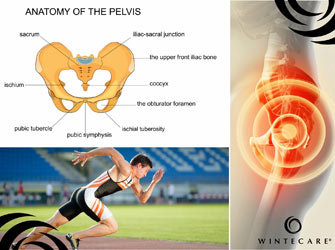A Diamond League sprinter reached out to us for treatment during the season, and already in the initial session we were able to identify a functional limit at the hip which was influencing his full-out run. The athlete was complaining of slight back pain connected to considerable tension in the sacroiliac joint and a constant sensation of tension in both hamstrings. Thanks to functional tests carried out in the assessment phase of the first treatment, we detected accentuated lordosis (a common issue for sprinters), which brought about a slight anteversion of the hips. This was making it difficult for the sprinter to keep the ideal posture for the full run in the last 40 metres of the race: it is in fact hip retroversion which allows for the almost-instantaneous advancement recall of the foot moving forward, minimising the dispersion of energy and time to then go on to the next step.
This less than optimal position also lead to a drastic reduction of the foot’s ability to spring off the ground, as it changed the angle of impact/rest as well as the speed at which the leg descends towards the earth. In essence, this position is limiting in terms of achieving top speed at a full run.
To intervene in the training phase for a case like this, we concentrated on the positioning of the torso muscles (core stability), on lengthening the posterior kinetic chain and on specific exercises which led the athlete to have greater sensibility in the hips.
To define the treatment strategy we, along with the athlete, analysed a few videos of his past two races and together we agreed on where and how to intervene.
The first three treatment sessions concentrated on the mobilisation of the sacroiliac joint, relaxing the tissues responsible for excess tension in the lumbar region (framed by the lumbus, piriformis and the hamstrings).
Next, with a series of precise mobilisations and targeted eccentric counter-resistance in the supine position, we then worked on the retroversion of the hips, focusing our attention on the iliopsoas and the diaphragm.
During two of the Diamond League Meetings, we held 8 sessions in which the athlete gradually regained a good range of movement for the sacroiliac and that bit of added sensitivity in the hips which allowed him to maintain the ideal posture during the full-run phase, for almost 10 metres more with respect to previous races. As a final result, there was a marked improvement in his finishing time.
One of the most interesting things about T-Plus technology is that it provides an opportunity to intervene on the biomechanics of the athlete in a way that is simple, pain-free and low-risk, supporting the specialist with stimulated reactions which are endogenous to the body.
The facts speak for themselves!
WINTECARE: Winning technologies and techniques for healthcare!








